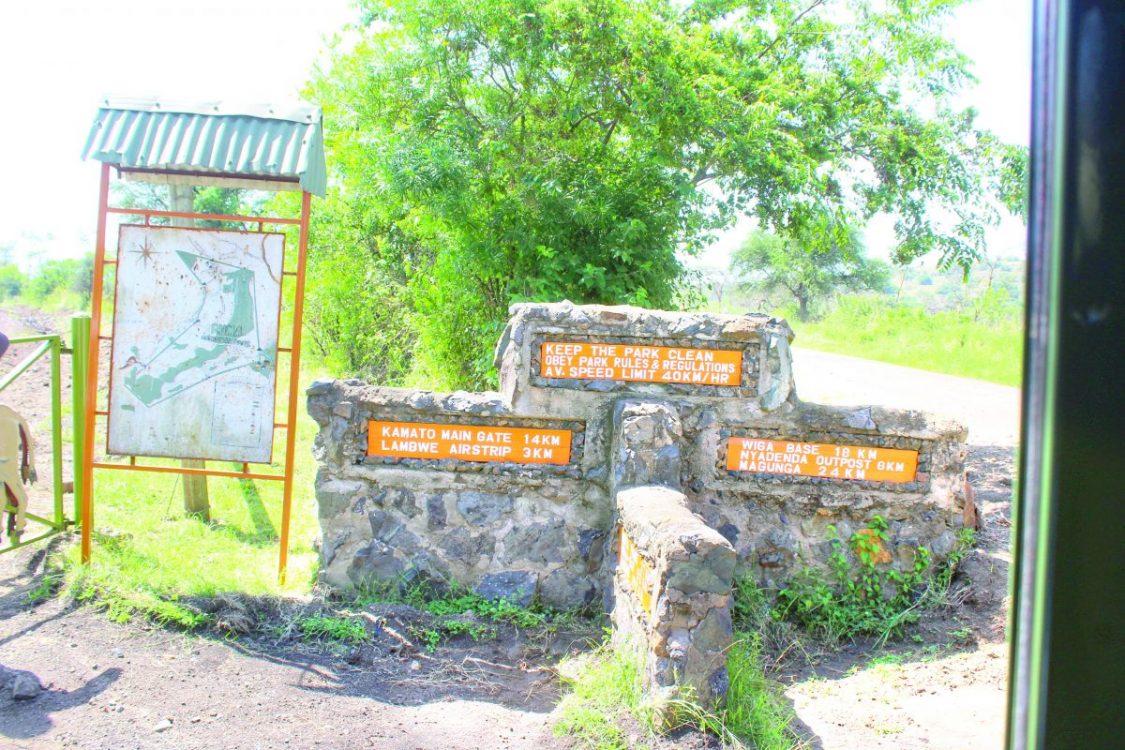Welcome to the last retreat of the endangered roan antelope

In the late 18th century, there was a mighty magician and a paramount chief named Gor Mahia. The man was a mystery to everyone and his magical powers earned him the name, Mahia, meaning strange.
His home in Sigama village, just a few kilometers from the shores of Lake Victoria has remained a place that attracts not only herbalists and witches, but politicians, businessmen and tourists who come to his grave to learn about history, but also to try to solve all kinds of personal problems,” begins 57 year old Elisha Kombo, a resident in Lambwe valley.
Gor’s home is also on the border of Ruma National Park, making the park gain a lot of popularity among visitors.
Elisha says it was difficult to distinguish whether this powerful chief was a spirit or human based on some of the things that he did. For instance, he would go into a house as himself and come out as a stranger.
He would disappear and reappear too. It was from this man that the great Gor Mahia Football Club derived its name and up to now, herbalists still visit the grave of this man to seek direction and power.
Gor’s village is just 30 minutes to my hometown in Rongo, Migori County and despite being an ardent traveller, I had never known the rich history, culture as well as tourist attractions that this beautiful lake county possesses.
Facing extinction
In particular, I was on a mission to discover Ruma National Park, home to the rare roan antelope. In the year 1969, there were 202 of them, but presently, their population is on the verge of extinction and current reports indicate that we only have 12 of them remaining in the country, all of them living in the park.
Because of rapid increase in human population over the years, the roan rangeland has been converted to farmlands and settlement areas. In addition, humans poach them for game meat and other cultural reasons. Their horns are valued music instruments and played during various traditional occasions.
It is because of their fierce and violent nature that these antelopes are referred to as Africa’s fearless savanna survivors or omoro in dholuo.
Nearly 34 African countries had the animal in the past, but presently only 30 countries, such as Benin, Angola, Ethiopia, Rwanda, Senegal, Uganda, Zambia, Kenya, Malawi and a few others have it. The species is locally extinct in Burundi, Eritrea and Gambia. It was also extinct in Swaziland, but it was reintroduced to a privately owned nature reserve known as Mkhaya.
In Kenya, the population of the Roan antelope was about 300 in 1978 with the largest population of about 200 animals being found in Lambwe Valley. The antelope would be spotted in the Masai Mara ecosystem in Narok County and Ithanga Hills in Kiambu County.
This population decreased from 200 animals in 1978 to about 19 animals in Ruma National Park by the end of 2019. Expanding human settlements have seen poaching of the species for game meat, farming in their habitats, and frequent bushfires leading to a significant drop in the population of the antelope.
Predation by hyenas and leopards are also a serious threat to these antelopes in Ruma. Experts project that antelopes could be extinct by 2025. The species has now settled in Lambwe Valley in Homa Bay County where conservation efforts have confined them to Ruma National Park.
Apart from the roan antelopes, the park has a great number of the Rothschild or Ugandan giraffes swaying gracefully with the backdrop of Gwasi hills and some feeding on acacias. They were only 30 when they were restocked, but are presently 300 out of the 1000 that exist in the country.
The black and white rhinos are the other animals which were restocked too.
Out of the 1414 rhinos that exist in the country, 37 are present in the park. We watched four of them grazing during the game drive. The effects of the rhinos were that they resulted in an increase of the number of guards in the park which also meant that the roan antelope was protected. It also raised the profile of the park.
Threats to the park
The park also had thriving population of cheetah, lion as well as a large population of elephants which have sadly disappeared. Other animals that can be viewed are buffaloes, impalas, hyenas, vervet monkeys, olive baboons as well as zebras.
There are also over 400 species of birds recorded in the park, making it an Important Bird Area (IBA).
Lambwe Valley is one of the regions in Kenya with the highest concentration of tsetse flies that are the vectors of sleeping sickness in human being and nagana in livestock.
“We work in collaboration with the Kenya Wildlife Service (KWS) and the communities that live around the park to eradicate the insects because they negatively impact wildlife and tourism,” explains John Mwangi a senior zoologist working with Kenya tsetse and tryponosomiasis eradication council in Homabay County.
He says tsetse flies reduce animal population in park and that’s why they work tirelessly to eradicate them, which will eventually translate to more visitors in the park. The last confirmed case of sleeping sickness was in 2009, however, control measures must be put in place to prevent recurrence of the disease, he says.
Ruma has received threats of extinction five times in its history with the recent one happening in the year 2014 when a group of politicians called for its degazettment stating that animals in the park encroached residents farms and destroyed their crops.
Another instance was in the year 1931, before it was gazetted as a game reserve, when an unsuccessful attempt was made to clear the bushes in Lambwe Valley and move away the elephants present at the time for human settlement.
In the year 1966, there were plans to develop Lambwe Valley to be used only for agricultural use, but the late prominent Kenyan trade unionist, educationist and Pan Africanist Tom Mboya prevailed upon the South Nyanza county Council to preserve it as a game reserve.
He further offered a section of his farm to be part of the reserve. In the year 1983, it was gazetted as a National Park.












